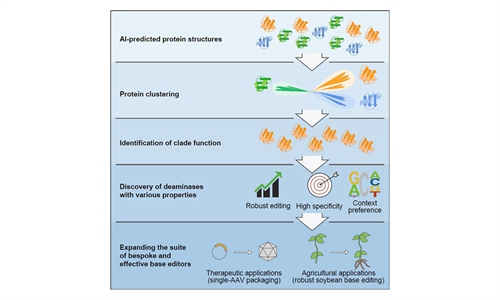
Photo: news.sciencenet.cn
Chinese researchers have developed a kind of highly-elastic ferroelectric material, offering broad prospect for the material to be applied in intelligent wearables, article in Science revealed.
Researchers from the Ningbo Institute of Material Technology and Engineering (NIMTE) of the Chinese Academy of Sciences (CAS), including Researcher Hu Benlin and Li Runwei, proposed a "slight crosslinking" method that imparts elastic recovery to ferroelectric materials.
The conventional ferroelectric materials exhibit poor elastic recovery—typically less than 2 percent, thus tend to be either brittle (ferroelectric ceramics) or plastic (ferroelectric polymers). The ferroelectric properties of these materials are mainly due to their crystalline regions, which lack intrinsic elasticity, according to the CAS.
Chinese researchers have managed to cope with the dilemma and managed to increase the elastic recovery of the materials to 125 percent, pioneering new academic direction of "elastic ferroelectricity."
The research titled "Intrinsically elastic polymer ferroelectric by precise slight crosslinking" was published in Science on Friday.
Through the precise design and control of the material structure, the balance between ferroelectricity and elasticity of ferroelectric materials was achieved, with the elastic recovery of the materials being as high as 125 percent, which means, after stretching it to twice the original length, it can not only maintain the original ferroelectricity, but also the original ferroelectricity after the external force, Hu was quoted as saying by China Central Television.
The researchers used a small amount of soft chain-like polymers to cross-link the amorphous winding parts around the ferroelectric crystals, and combine with each other to form an elastic fishnet-like structure. When an external force acts, the structure that connects with ferroelectric crystals can produce reversible deformation to absorb the external force and avoid the damage of the external force to the crystal part.
Ferroelectric materials are multifunctional materials that are irreplaceable in certain specific applications. They can be used in high-capacity capacitors, but they have low energy density. In transducers such as sonar, piezoelectric nozzles and ultrasound imaging, ferroelectric ceramics must be used, according to Hu.
Ferroelectric materials can also be applied in data storage and processing, sensing and energy conversion, nonlinear optics, and optoelectronic devices. They are used in computer memory, high-precision motors, ultra-sensitive sensors, and sonar devices, and are also an indispensable material in electronic devices such as mobile phones and tablets.
Sensors made of elastic ferroelectric materials are "compliant," have higher measurement accuracy, better wearing comfort, and bring broad imagination space to the fields of smart healthcare, and intelligent wearables, media reports said.
Global Times


